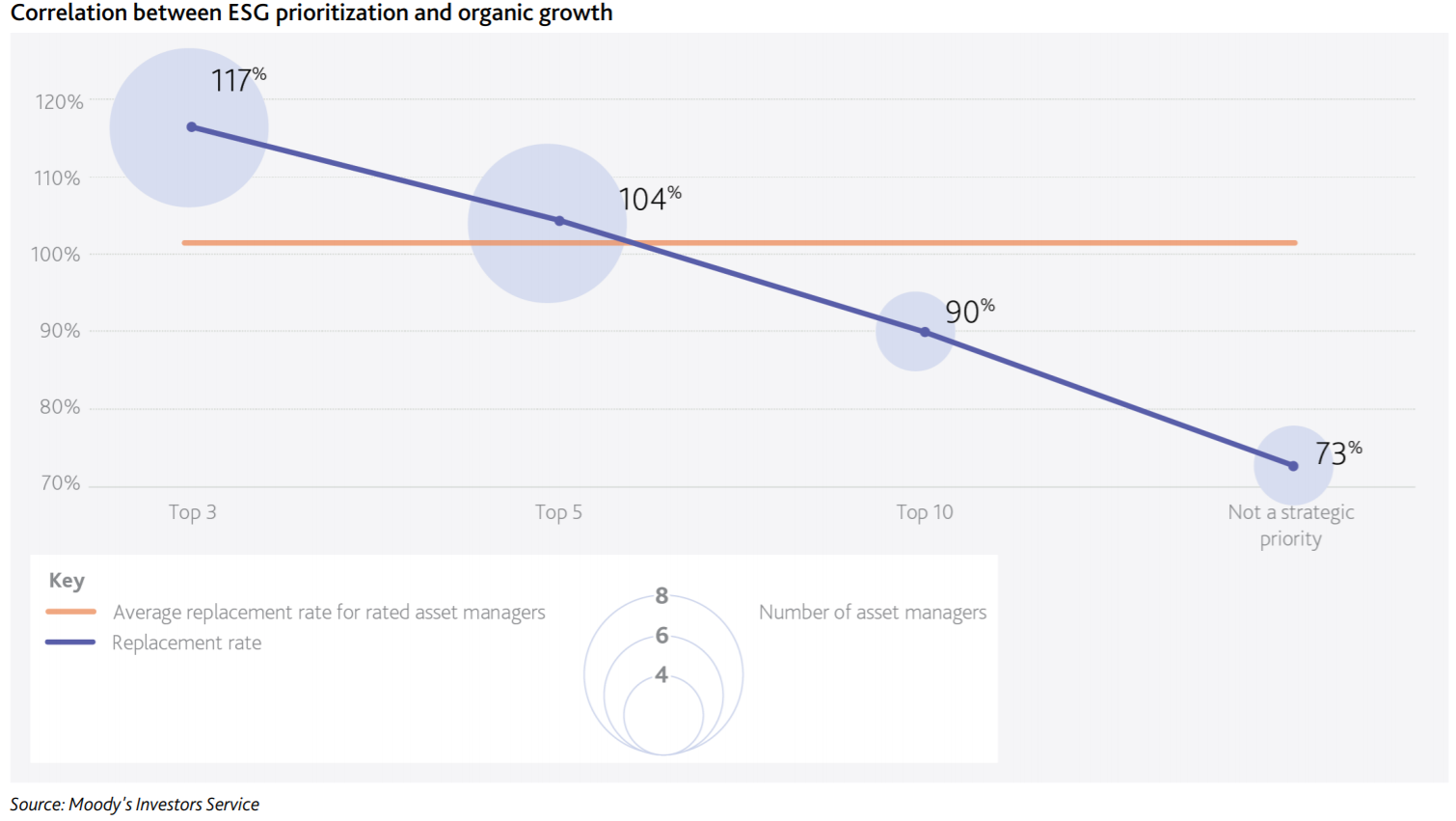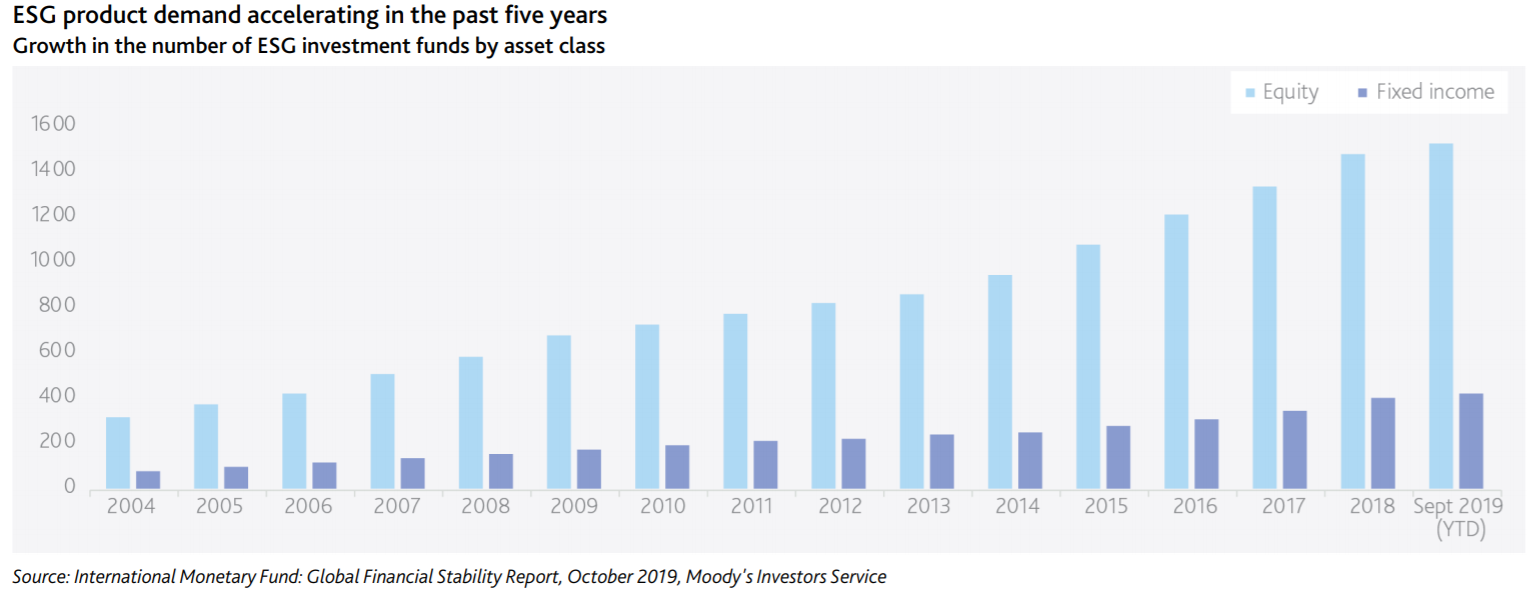Environmental, social and governance (ESG) investing is a value proposition asset managers are able to deliver clients unlike the promise of delivering consistent outperformance, according to a Moody's Investors Services report.
The report, entitled Beyond passive, ESG investing is the next growth frontier for asset managers, found asset managers which incorporate ESG strategies in their product range show above-average organic growth.
According to a recent Moody’s survey, asset managers that consider ESG a top three priority have an average AUM replacement rate of 117% over the past three years versus just 73% for managers that did not consider ESG as a top 10 priority.

Assets in ESG products have grown exponentially in recent years. According to JP Morgan, sustainable investments have surged to $8trn however this is out of a total $78.9trn invested assets.
Moody’s highlighted a number of factors driving this uptake including a more socially-conscious investor set and a favourable regulatory environment.
Stephen Tu, vice president, senior credit officer at Moody’s and co-author of the report, noted: “Regulators are facilitating the growth and acceptance of ESG products by encouraging more transparency, disclosure and compliance around these products, just as they did earlier with passive products.
“The passive revolution accelerated after regulators and financial media helped draw attention to the consistency and regularity of active manager underperformance, net of fees. A similar dynamic is underway with respect to ESG.”
ETF Insight: Are ETF and index providers taking ESG seriously?
The report said incorporating ESG into indices is on the rise. Because ESG is not cyclical, unlike factor-weighted indices, the inclusion of sustainable considerations is not subject by periods of out or underperformance.
“ESG indexes are also attracting more interest, and as ESG factors become incorporated into index products, passive ESG is likely to be a strong growth area, alongside traditional active ESG funds,” Tu added.
“As more and more money flows into ESG, it will flow to companies and sectors that are deemed more sustainable, raising the valuations of those companies, creating a positive feedback effect.”

Barriers to ESG growth
There are two major hurdles to ESG growth, the report argued. The first is a lack of standardisation and market fragmentation.
Although steps have been made by the United Nations, there are numerous definitions in the underlying definitions of E, S and G and within ESG investing.
“The differences in definitions of ESG...makes for a currently fragmented ESG product marketplace. Over time, regulators, particularly in the EU, are likely to set guidelines defining taxonomy and improving standardisation in the marketplace.”
The key problem is this causes an increase in greenwashing where asset managers label a product as ESG but subsequently apply minimal investment judgment based on ESG factors.
For example, Vanguard came under the spotlight last year for including a number of gun companies in one of its ESG index funds despite the prospectus stating it excluded this industry.
“Until there is more standardisation around terminology and practices, ‘greenwashing’ is still likely to remain prevalent.”
The second barrier to growth is the perceived issue investors must give up returns when investing in ESG funds, however, Moody’s said this is not the case.
ETF Insight: Can ESG investors do good and avoid underperforming?
The report cited a Morgan Stanley study of 11,000 mutual funds between 2004 and 2018 which found sustainable funds provided comparable returns to traditional funds while lowering downside risk.
“We would argue that any return trade-off, whether positive or negative, is secondary to the more impactful investor choice of which level of fees to pay on an investment product or how much activity a portfolio should exhibit.”



